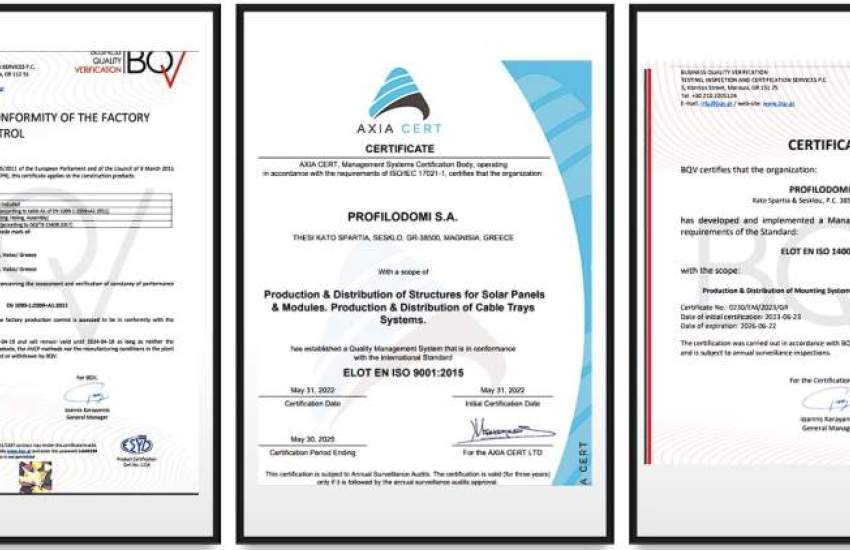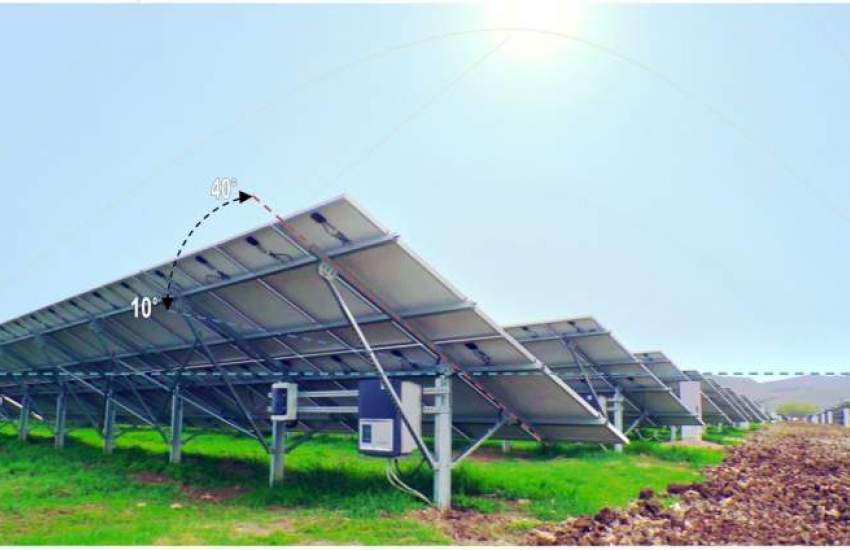Mounting System PD.1C.1P2124/ 10-35 with CHANGEABLE INCLINATION
for 1 row of solar panels portrait and 1 driving pile foundation
Optimized Energy Production, Seasonal Adaptability and Performance in Low Sunlight Conditions:
Adjusting the inclination of solar panels based on the season allows for optimal alignment with the sun's changing position throughout the year. This maximizes sunlight exposure, leading to increased energy production furthermore ensures that solar panels operate at their peak efficiency by minimizing the angle of incidence between sunlight and the panels. This helps capture more sunlight and convert it into electricity. Different seasons bring varying solar angles, and adjusting the panel inclination accommodates these changes. This adaptability ensures consistent energy generation, even during winter months when the sun is lower in the sky. In winter, when the sun's path is lower, adjusting the inclination helps capture more sunlight during periods of low solar elevation. This improves the panels' performance on cloudy or overcast days.
Increased Energy Harvesting Potential, even as a Fixed system: In case of not changing the inclination, a Fine-tuning of the panel’s tilt , allows for better energy harvesting potential by aligning the panels closer to the optimal angle. This helps extract the maximum amount of energy from the available sunlight.
Return on Investment (ROI) Improvement: The ability to adapt to seasonal changes and optimize energy production contributes to a higher ROI for solar panel installations. Increased energy yield justifies the initial investment over time.
Adaptable Design for Various Geographic Locations: Changeable inclination systems can be customized for different geographic locations, accommodating variations in sunlight angles and climate conditions. This makes the technology versatile and applicable across diverse regions.
Shadow Avoidance on Uneven Terrain: Uneven ground can result in shadows being cast by one solar panel onto another if they are all set at the same angle. By allowing different angles for individual tables, shadowing can be minimized or eliminated, ensuring each panel receives maximum sunlight exposure.
Enhanced Flexibility in Design: Uneven terrain often requires a flexible and adaptable design. Allowing different angles for solar panels accommodates this need for flexibility, making it possible to design and install solar arrays on challenging terrains without compromising energy production.
Ease of Installation and Maintenance Access: Almost vertical tilt of solar panels brings them closer to a standing position, making installation and maintenance tasks more accessible. Installation and maintenance crews can easily reach components and perform works or inspections without the need for specialized equipment, extensive maneuvering or using ladders. In almost vertical tilt configurations, the space under the solar panels is more open, simplifying grass management. Mowing and vegetation control become easier tasks, reducing the effort and time required for landscape maintenance around the solar installation.
During winter, the sun's path is lower in the sky, and adjusting the solar panel angles to be higher can help capture more sunlight.
Bifacial solar panels can capture sunlight on both the front and back sides. In Winter, higher angles not only increase direct sunlight exposure but also enhance the amount of sunlight reaching the back side of bifacial panels, further increasing overall energy yield.












